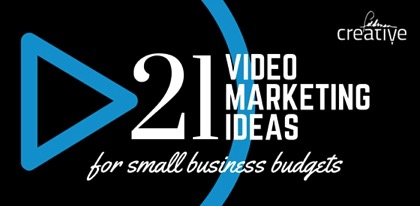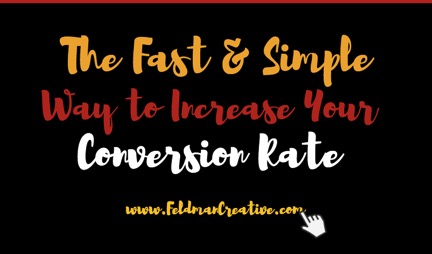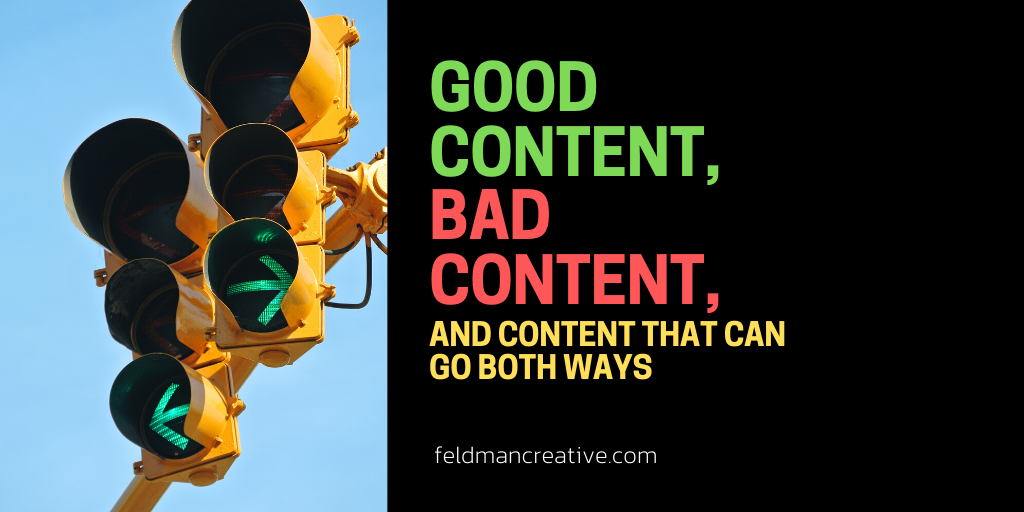Search “how to make your website more effective” and the winner of the search engine sweepstakes is…
5 Free Ways to Make Your Website More Effective NOW.
Good stuff. It’s a guest post on Pat Flynn’s Smart Passive Income site by Sarah Peterson of SumoMe. She says to make your website more effective you should:
- Reduce decision fatigue
- Capture the audience’s attention with strong taglines, images, and specific language
- Present social proof
- Audit and optimize the technical stuff
- Move your opt-in offers higher up on the page
These are good suggestions. Thanks Sarah and Pat.
Want to make your website more effective with design? A strong post from Peep Laja at ConversionXL recommends:
- Create a visual hierarchy based on objectives
- Make the things you want visitor’s to click bigger and easier to get to
- Use great visuals that comply to the rule of thirds
- Use white space
- Simplify
More good stuff and lots of cool examples and explanations of design principles.
Now I want to share my suggestion—just one, one big one.
The way to make your website more effective is…
Make your website more generous.
Simple, right? Be like Santa. Make a list and check it twice.
What goes on that list? Like Santa’s list, it should contain the things your people want you to produce. They’re probably not going to write you letters or sit on your lap and tell you, but you need to find out what they want somehow.
You need to know precisely what challenges your audience face and give them solutions.
Give, give, and give some more and what you get is a more effective website.
What is an effective website?
Those ten tips I borrowed from Smart Passive Income and ConversionXL are good ones, but they focus strictly on conversion. They’re ideas for getting people on your website to take action, which is obviously something you want.
However, you also want more people on your website. As Andy Crestodina teaches, the formula for success is:
Traffic x Conversion rate = Success
So let’s look at some of the measures you can use to assess the effectiveness of your website. (I’ll also share with you how I’ve done this year with these.)
Domain authority—Domain authority (DA) reflects the ranking strength of your website on Google, as measured by Moz, which looks at your link profile and a variety of other metrics. It’s not from Google, like PageRank once was, but it’s the closest you’ll get to learning where your website stands for authority and is today’s best measure of how you’ll do on search for competitive keyword phrases.
It’s not easy to elevate your DA quickly and it’s unlikely you’ll increase it at all unless you continuously publish useful content and increase its reach across the various digital channels.
This year, my website’s domain authority slowly climbed through the 40s, remained at 49 for several months, and recently reached 50 (on a scale of 1 – 100). While I often compete with more authoritative websites for search phrases, 50 is nothing to shake a stick at for a company of my size.
Alexa ranking—Your Alexa ranking is a number that attempts to report (it’s estimated) where you stand in the race for traffic against every website in the world. If your Alexa ranking is 5, it means only 4 websites get more traffic.
In the past three months (the window Alexa reports), my Alexa ranking has risen 103,904 spots to reach a global rank of 228,206.
Actual traffic—Your traffic numbers come from Google Analytics. They’re not estimates. Theoretically, they’re accurate. A visit is described as a “session.” You can also look at “pageviews” or “unique pageviews.” I prefer the latter, which eliminates the factor of a single page being viewed multiple times in a session.
Traffic numbers for Feldman Creative:
- I hit and passed the 10,000/month mark for the first time this year.
- In the past 30 days, my website has logged 10,613 sessions.
- For the year (to date), traffic increased by 14% vs. the prior year as measured by unique pageviews.
Traffic from search—The Google Analytics acquisition reports allows you to examine where your traffic comes from. Because a big portion of my efforts goes into creating blog posts that will rank in search, I like to monitor the number and, of course, see it go up.
- Search traffic for the year 2016 increased by 28% vs. the prior year.
- 25% of my site’s traffic comes from organic search, which is 2.5% higher than the previous year.
Engagement—Making your website more effective also requires engaging its visitors. The degree to which you’re accomplishing this is revealed in the “Behavior” section of your Google Analytics. Conveniently (and in alphabetical order), it appears after Acquisition (traffic) and before Conversion.
Metrics within this section include average session duration, bounce rate, and pages per session.
- My session duration level stayed the same this year.
- Bounce rate went down slightly, but I don’t pay this metric a lot of mind because as a blogger (a generous content marketer), I expect a large percentage of users to be one-and-done. I do monitor the bounce rate for my home page because a high bounce rate there is obviously a concern.
- Good news came from my behavior analytics in that pages per session came in very close to 2, which is a 30% increase over the previous year.
Conversion—You can monitor conversion a variety of ways and I don’t plan to get deep into the topic in this post. Google Analytics allows you to setup goals which might be a transaction, pageview, and more. Content marketers aiming to increase the size of their email list often measure conversion as an opt-in, which is often useful.
I use GetResponse for email marketing and marketing automation and have a variety of forms and landing pages, each with its own conversion stats. A couple of recent offers or lead magnets are converting well:
- A blogging eBook, offered via a pop-up is converting at > 3%, which is a nice number.
- A “content upgrade,” a lead magnet promotion checklist available on two of my blog posts, is converting at > 5%, also quite good.
You’re unlikely to find a meaningful benchmark to use as an industry standard, so your conversion goals should be focused within. That is, you’ll want to measure how your offers compare to each other.
Benchmark and monitor website effectiveness
If you haven’t already, I propose you begin benchmarking all or some of these metrics.
Create a simple dashboard. Identify the effectiveness measures you care about and list them along one axis of a spreadsheet. Create a reasonable time interval for the other axis: monthly, quarterly, bi-annually, or annually. Longer intervals will probably deliver more meaningful insights to inform your content marketing strategy.
Website effectiveness is also about reach
I’ve hit the topic of measuring traffic fairly hard thus far and stressed the key is to be generous with your expertise. Do this by:
- Blogging—Publish blog posts regularly. In addition to consistency, try to offer variety. Tackle a variety of topics related to your field of expertise and mix up the format or style of your posts: how-to’s, lists, roundups, interviews, stories, videos, podcasts, etc.
- Lead magnets—Give visitors a reason to join your mailing list, come back for more, and tell their friends with awesome offers. Package your lessons as eBooks, checklists, cheat sheets, webinars, tools, templates and so forth.
Then promote the hell out of your content, both your articles and lead magnets. Far too many marketers invest heavily in content creation and very little in promotion. Some experts say you’ll achieve optimum ROI by putting 80% of your content marketing budget, be it time or money, or both, into content promotion.
- Search—The majority of your content should trace to strategies based on keywords. Select keywords that (1) you know people search for and (2) you have a chance of ranking for.
- Social media—Through some combination of the social media channels, your audience uses, you should share your content close to every day.
- Email—Send an email notice or newsletter at least as often as you create new blog posts and lead magnets. Promote older ones from time to time and batch topically related content into email campaigns as well.
10 posts that made my website more magnetic this year
My top 5 posts averaged more than 2,100 views this year and the entire top ten have so far amassed at least 1,000 views each. In case you missed them, here they are:
 1. The Best Copywriters Offer Great Copywriting Secrets (2.7K views)
1. The Best Copywriters Offer Great Copywriting Secrets (2.7K views)

2.125 Quick Tips to Sharpen Your Copywriting Skills (2.3 views)

3. Types of Branded Content: A Guide to 11 Popular Formats [Infographic] (2.3K views)

4. 20 Ideas for Your Website Homepage Content [Infographic] (1.7K views)

5. Content Marketing KPIs: An Easy-to-Understand Overview for the Analytically Challenged (1.7K views)

6. The Business Blogging Plan: 50 Best Practices (1.6K views)

7. 21 Video Marketing Ideas for Small Business Budgets [Infographic] (1.6K views

8. What is a Lead Magnet? (And 10 Ways to Quickly Magnify the Size of Your Email List) (1.3K views)

9. The Fast & Simple Way to Increase Your Conversion Rate [Infographic] (1.2K views)

10. Want to Know How to Make Your Written Content Great? (1.1K views)
I hope these ideas helped. I know you want to make your website more effective in the year to come. Be a giver.
Here’s your parting gift…






